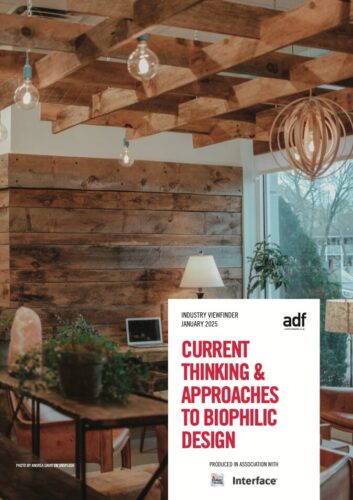
Biophilic design focuses on incorporating natural elements like plants, water features, and nature-inspired materials into urban spaces and workplaces to improve user wellbeing and productivity. This approach seeks to replicate the experience of being in nature through strategies like using natural materials, simulating natural light patterns, and blending indoor and outdoor spaces. Scientific evidence highlights benefits such as reduced stress, improved cognitive function, and enhanced user satisfaction, aligning with corporate ESG goals and fostering healthier environments.
Architects’ Datafile’s whitepaper reveals both the opportunities and challenges architects are facing in adopting biophilic design. While many recognise its potential, only half of respondents actively use biophilic principles in their projects. A significant barrier is the lack of client understanding, with more than half of architects reporting that their clients are not fully aware of biophilic design’s benefits. Additionally, many architects struggle to measure the return on investment (ROI) for biophilic features, further discouraging client interest. Certain sectors lend themselves more easily to biophilic design, but successful integration with overall architectural goals remains a challenge.
As workplaces become increasingly reliant on technology and operate around the clock, biophilic design offers a valuable tool for supporting mental and physical wellbeing. However, practical implementation hurdles, insufficient client awareness, and limited data on financial benefits contribute to slower adoption in commercial projects. These challenges underline the need for greater education and evidence-based advocacy to unlock the full potential of biophilic design.

